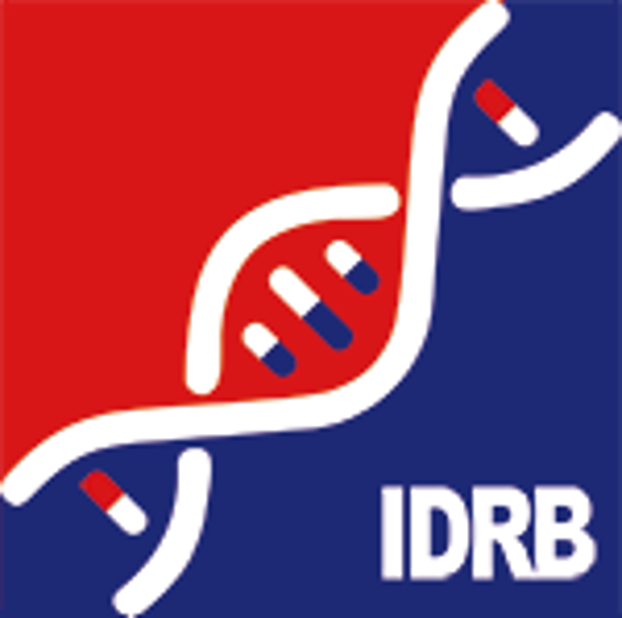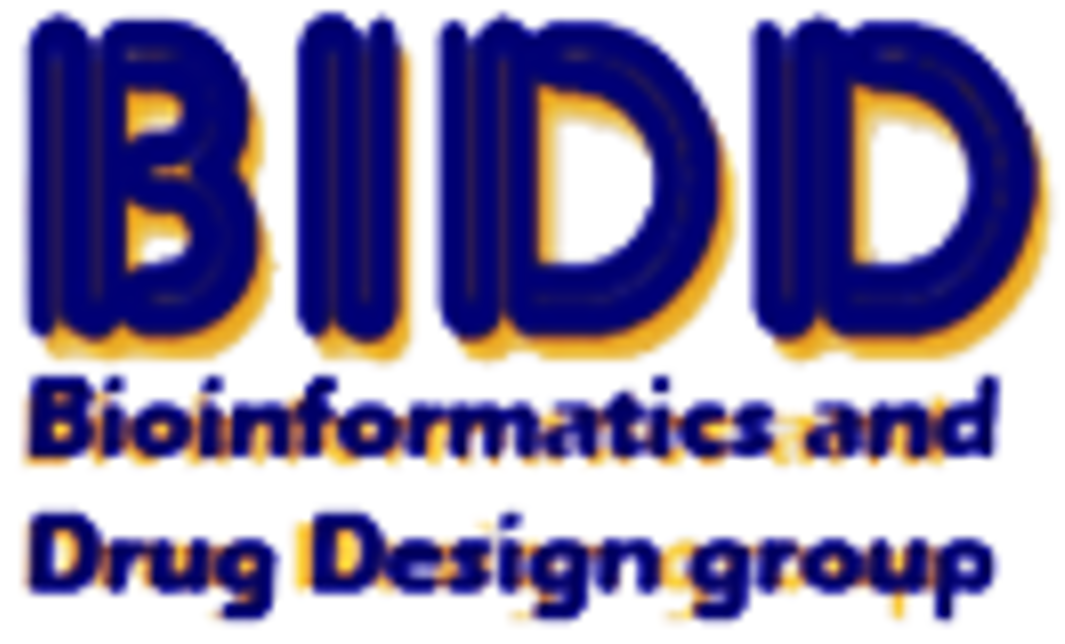Target Information
| Target General Information | Top | |||||
|---|---|---|---|---|---|---|
| Target ID |
T61657
(Former ID: TTDR01191)
|
|||||
| Target Name |
Retinoic acid receptor beta (RARB)
|
|||||
| Synonyms |
RAR-epsilon; RAR-beta; Nuclear receptor subfamily 1 group B member 2; NR1B2; HBV-activated protein; HAP
Click to Show/Hide
|
|||||
| Gene Name |
RARB
|
|||||
| Target Type |
Successful target
|
[1] | ||||
| Disease | [+] 1 Target-related Diseases | + | ||||
| 1 | Kaposi sarcoma [ICD-11: 2B57] | |||||
| Function |
Retinoic acid receptors bind as heterodimers to their target response elements in response to their ligands, all-trans or 9-cis retinoic acid, and regulate gene expression in various biological processes. The RXR/RAR heterodimers bind to the retinoic acid response elements (RARE) composed of tandem 5'-AGGTCA-3' sites known as DR1-DR5. In the absence or presence of hormone ligand, acts mainly as an activator of gene expression due to weak binding to corepressors. In concert with RARG, required for skeletal growth, matrix homeostasis and growth plate function. Receptor for retinoic acid.
Click to Show/Hide
|
|||||
| BioChemical Class |
Nuclear hormone receptor
|
|||||
| UniProt ID | ||||||
| Sequence |
MTTSGHACPVPAVNGHMTHYPATPYPLLFPPVIGGLSLPPLHGLHGHPPPSGCSTPSPAT
IETQSTSSEELVPSPPSPLPPPRVYKPCFVCQDKSSGYHYGVSACEGCKGFFRRSIQKNM IYTCHRDKNCVINKVTRNRCQYCRLQKCFEVGMSKESVRNDRNKKKKETSKQECTESYEM TAELDDLTEKIRKAHQETFPSLCQLGKYTTNSSADHRVRLDLGLWDKFSELATKCIIKIV EFAKRLPGFTGLTIADQITLLKAACLDILILRICTRYTPEQDTMTFSDGLTLNRTQMHNA GFGPLTDLVFTFANQLLPLEMDDTETGLLSAICLICGDRQDLEEPTKVDKLQEPLLEALK IYIRKRRPSKPHMFPKILMKITDLRSISAKGAERVITLKMEIPGSMPPLIQEMLENSEGH EPLTPSSSGNTAEHSPSISPSSVENSGVSQSPLVQ Click to Show/Hide
|
|||||
| 3D Structure | Click to Show 3D Structure of This Target | PDB | ||||
| HIT2.0 ID | T33VZN | |||||
| Drugs and Modes of Action | Top | |||||
|---|---|---|---|---|---|---|
| Approved Drug(s) | [+] 1 Approved Drugs | + | ||||
| 1 | Alitretinoin | Drug Info | Approved | Kaposi sarcoma | [2], [3] | |
| Clinical Trial Drug(s) | [+] 1 Clinical Trial Drugs | + | ||||
| 1 | Tamibarotene | Drug Info | Phase 3 | T-cell leukaemia | [4] | |
| Mode of Action | [+] 4 Modes of Action | + | ||||
| Agonist | [+] 8 Agonist drugs | + | ||||
| 1 | Alitretinoin | Drug Info | [1] | |||
| 2 | PMID27336223-Compound-10 | Drug Info | [7] | |||
| 3 | PMID27336223-Compound-7 | Drug Info | [7] | |||
| 4 | PMID27336223-Compound-8 | Drug Info | [7] | |||
| 5 | AC261066 | Drug Info | [8] | |||
| 6 | AC55649 | Drug Info | [8] | |||
| 7 | BMS641 | Drug Info | [10] | |||
| 8 | CD666 | Drug Info | [11] | |||
| Modulator | [+] 1 Modulator drugs | + | ||||
| 1 | Tamibarotene | Drug Info | [5], [6] | |||
| Antagonist | [+] 1 Antagonist drugs | + | ||||
| 1 | AGN193109 | Drug Info | [9] | |||
| Inhibitor | [+] 1 Inhibitor drugs | + | ||||
| 1 | TTNPB | Drug Info | [12] | |||
| Cell-based Target Expression Variations | Top | |||||
|---|---|---|---|---|---|---|
| Cell-based Target Expression Variations | ||||||
| Drug Binding Sites of Target | Top | |||||
|---|---|---|---|---|---|---|
| Ligand Name: Tretinoin | Ligand Info | |||||
| Structure Description | Crystal structure of RARb LBD in complex with 9cis retinoic acid | PDB:4DM8 | ||||
| Method | X-ray diffraction | Resolution | 2.30 Å | Mutation | No | [13] |
| PDB Sequence |
ESYEMTAELD
187 DLTEKIRKAH197 QETFPSLCQL207 GKYTTNSSAD217 HRVRLDLGLW227 DKFSELATKC 237 IIKIVEFAKR247 LPGFTGLTIA257 DQITLLKAAC267 LDILILRICT277 RYTPEQDTMT 287 FSDGLTLNRT297 QMHNAGFGPL307 TDLVFTFANQ317 LLPLEMDDTE327 TGLLSAICLI 337 CGDRQDLEEP347 TKVDKLQEPL357 LEALKIYIRK367 RRPPHMFPKI379 LMKITDLRSI 389 SAKGAERVIT399 LKMEIPGSMP409 PLIQEMLE
|
|||||
|
|
PHE201
3.435
TRP227
4.222
PHE230
3.693
LEU233
3.327
ALA234
3.546
CYS237
3.927
LYS240
4.954
LEU268
3.826
LEU271
3.529
ILE272
3.612
ILE275
4.059
ARG278
2.823
THR287
4.356
|
|||||
| Click to View More Binding Site Information of This Target and Ligand Pair | ||||||
| Ligand Name: BMS641 | Ligand Info | |||||
| Structure Description | Crystal structure of RARbeta LBD in complex with selective partial agonist BMS641 [3-chloro-4-[(E)-2-(5,5-dimethyl-8-phenyl-5,6-dihydronaphthalen-2-yl)ethenyl]benzoic acid] | PDB:4JYI | ||||
| Method | X-ray diffraction | Resolution | 1.90 Å | Mutation | No | [14] |
| PDB Sequence |
SYEMTAELDD
179 LTEKIRKAHQ189 ETFPSLCQLG199 KYTTNSSADH209 RVRLDLGLWD219 KFSELATKCI 229 IKIVEFAKRL239 PGFTGLTIAD249 QITLLKAACL259 DILILRICTR269 YTPEQDTMTF 279 SDGLTLNRTQ289 MHNAGFGPLT299 DLVFTFANQL309 LPLEMDDTET319 GLLSAICLIC 329 GDRQDLEEPT339 KVDKLQEPLL349 EALKIYIRKR359 RPSKPHMFPK369 ILMKITDLRS 379 ISAKGAERVI389 TLKMEIPGSM399 PPLIQEMME
|
|||||
|
|
PHE192
3.107
TRP218
3.932
PHE221
3.262
LEU224
3.789
ALA225
3.338
CYS228
3.656
LEU259
3.745
LEU262
3.498
ILE263
3.749
ARG265
4.479
ILE266
3.736
ARG269
3.395
PHE279
3.300
|
|||||
| Click to View More Binding Site Information of This Target with Different Ligands | ||||||
| Different Human System Profiles of Target | Top |
|---|---|
|
Human Similarity Proteins
of target is determined by comparing the sequence similarity of all human proteins with the target based on BLAST. The similarity proteins for a target are defined as the proteins with E-value < 0.005 and outside the protein families of the target.
A target that has fewer human similarity proteins outside its family is commonly regarded to possess a greater capacity to avoid undesired interactions and thus increase the possibility of finding successful drugs
(Brief Bioinform, 21: 649-662, 2020).
Biological Network Descriptors
of target is determined based on a human protein-protein interactions (PPI) network consisting of 9,309 proteins and 52,713 PPIs, which were with a high confidence score of ≥ 0.95 collected from STRING database.
The network properties of targets based on protein-protein interactions (PPIs) have been widely adopted for the assessment of target’s druggability. Proteins with high node degree tend to have a high impact on network function through multiple interactions, while proteins with high betweenness centrality are regarded to be central for communication in interaction networks and regulate the flow of signaling information
(Front Pharmacol, 9, 1245, 2018;
Curr Opin Struct Biol. 44:134-142, 2017).
Human Similarity Proteins
Biological Network Descriptors
|
|
|
There is no similarity protein (E value < 0.005) for this target
|
| Degree | 5 | Degree centrality | 5.37E-04 | Betweenness centrality | 1.27E-06 |
|---|---|---|---|---|---|
| Closeness centrality | 2.03E-01 | Radiality | 1.35E+01 | Clustering coefficient | 3.00E-01 |
| Neighborhood connectivity | 2.40E+01 | Topological coefficient | 3.47E-01 | Eccentricity | 11 |
| Download | Click to Download the Full PPI Network of This Target | ||||
| Chemical Structure based Activity Landscape of Target | Top |
|---|---|
| Drug Property Profile of Target | Top | |
|---|---|---|
| (1) Molecular Weight (mw) based Drug Clustering | (2) Octanol/Water Partition Coefficient (xlogp) based Drug Clustering | |
|
|
||
| (3) Hydrogen Bond Donor Count (hbonddonor) based Drug Clustering | (4) Hydrogen Bond Acceptor Count (hbondacc) based Drug Clustering | |
|
|
||
| (5) Rotatable Bond Count (rotbonds) based Drug Clustering | (6) Topological Polar Surface Area (polararea) based Drug Clustering | |
|
|
||
| "RO5" indicates the cutoff set by lipinski's rule of five; "D123AB" colored in GREEN denotes the no violation of any cutoff in lipinski's rule of five; "D123AB" colored in PURPLE refers to the violation of only one cutoff in lipinski's rule of five; "D123AB" colored in BLACK represents the violation of more than one cutoffs in lipinski's rule of five | ||
| Co-Targets | Top | |||||
|---|---|---|---|---|---|---|
| Co-Targets | ||||||
| Target Poor or Non Binders | Top | |||||
|---|---|---|---|---|---|---|
| Target Poor or Non Binders | ||||||
| Target Regulators | Top | |||||
|---|---|---|---|---|---|---|
| Target-regulating microRNAs | ||||||
| Target-regulating Transcription Factors | ||||||
| Target-interacting Proteins | ||||||
| Target Profiles in Patients | Top | |||||
|---|---|---|---|---|---|---|
| Target Expression Profile (TEP) |
||||||
| Target Affiliated Biological Pathways | Top | |||||
|---|---|---|---|---|---|---|
| KEGG Pathway | [+] 3 KEGG Pathways | + | ||||
| 1 | Pathways in cancer | |||||
| 2 | Small cell lung cancer | |||||
| 3 | Non-small cell lung cancer | |||||
| Reactome | [+] 1 Reactome Pathways | + | ||||
| 1 | Nuclear Receptor transcription pathway | |||||
| WikiPathways | [+] 5 WikiPathways | + | ||||
| 1 | Vitamin A and Carotenoid Metabolism | |||||
| 2 | Nuclear Receptors in Lipid Metabolism and Toxicity | |||||
| 3 | Mesodermal Commitment Pathway | |||||
| 4 | Integrated Pancreatic Cancer Pathway | |||||
| 5 | Nuclear Receptors | |||||
| References | Top | |||||
|---|---|---|---|---|---|---|
| REF 1 | Retinoic acid receptors and retinoid X receptors: interactions with endogenous retinoic acids. Proc Natl Acad Sci U S A. 1993 Jan 1;90(1):30-4. | |||||
| REF 2 | URL: http://www.guidetopharmacology.org Nucleic Acids Res. 2015 Oct 12. pii: gkv1037. The IUPHAR/BPS Guide to PHARMACOLOGY in 2016: towards curated quantitative interactions between 1300 protein targets and 6000 ligands. (Ligand id: 2645). | |||||
| REF 3 | Natural products as sources of new drugs over the last 25 years. J Nat Prod. 2007 Mar;70(3):461-77. | |||||
| REF 4 | ClinicalTrials.gov (NCT04797780) SY-1425 Plus Azacitidine in Participants With Newly Diagnosed RARA-positive Higher-Risk Myelodysplastic Syndrome. U.S. National Institutes of Health. | |||||
| REF 5 | Tamibarotene: a candidate retinoid drug for Alzheimer's disease. Biol Pharm Bull. 2012;35(8):1206-12. | |||||
| REF 6 | A retinoic acid receptor agonist tamibarotene suppresses iron accumulation in the liver.Obesity (Silver Spring).2013 Jan;21(1):E22-5. | |||||
| REF 7 | Therapeutic use of selective synthetic ligands for retinoic acid receptors: a patent review.Expert Opin Ther Pat. 2016 Aug;26(8):957-71. | |||||
| REF 8 | Discovery of a potent, orally available, and isoform-selective retinoic acid beta2 receptor agonist. J Med Chem. 2005 Dec 1;48(24):7517-9. | |||||
| REF 9 | Therapeutic applications for ligands of retinoid receptors. Curr Pharm Des. 2000 Jan;6(1):25-58. | |||||
| REF 10 | Rational design of RAR-selective ligands revealed by RARbeta crystal stucture. EMBO Rep. 2004 Sep;5(9):877-82. | |||||
| REF 11 | Identification of synthetic retinoids with selectivity for human nuclear retinoic acid receptor gamma. Biochem Biophys Res Commun. 1992 Jul 31;186(2):977-83. | |||||
| REF 12 | 9-cis-retinoic acid analogues with bulky hydrophobic rings: new RXR-selective agonists. Bioorg Med Chem Lett. 2004 Dec 20;14(24):6117-22. | |||||
| REF 13 | Structural basis for a molecular allosteric control mechanism of cofactor binding to nuclear receptors. Proc Natl Acad Sci U S A. 2012 Mar 6;109(10):E588-94. | |||||
| REF 14 | An Unexpected Mode Of Binding Defines BMS948 as A Full Retinoic Acid Receptor beta (RARbeta, NR1B2) Selective Agonist. PLoS One. 2015 May 1;10(5):e0123195. | |||||
If You Find Any Error in Data or Bug in Web Service, Please Kindly Report It to Dr. Zhou and Dr. Zhang.

